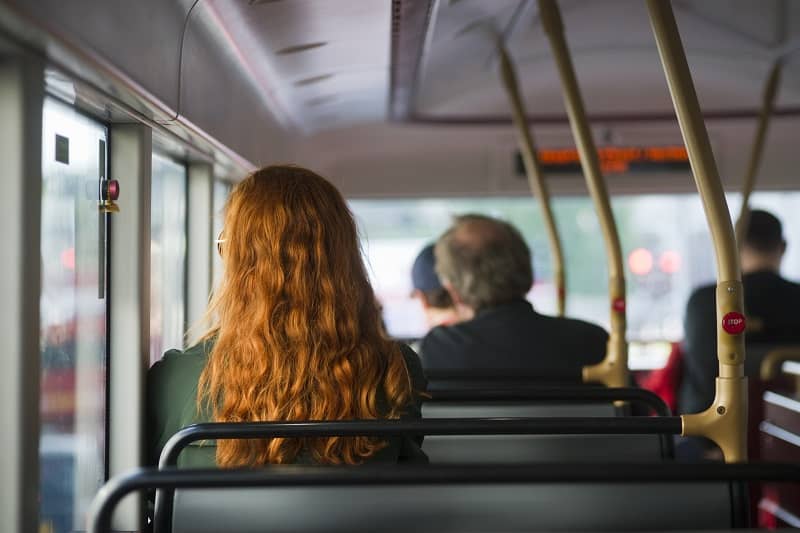By Eric Fruits, Ph.D.
In recent years, school vouchers and education savings accounts (ESAs) have become increasingly popular as a means of providing families with the opportunity to send their children to private schools, rather than public schools. This has sparked debate over whether these programs positively or negatively affect the quality of public schools and the academic achievement of students in public schools. A large body of empirical research indicates that school choice programs are associated with small, but statistically significant, increases in public school quality.
Proponents of school vouchers and ESAs hold that the programs can improve the quality of public schools by offering families a choice in the education of their children. They argue that competition between public and private schools will drive public schools to improve in order to remain competitive and to attract and retain more students. Because public school funding is often tied to public school enrollment or attendance, it is claimed competition among public schools, private schools, and homeschool options provides an incentive for public schools to improve in order to maintain their funding.
Critics of these programs, however, argue that voucher and ESA programs can lead to a decrease in the quality of public schools. It is claimed, when public school funding is tied to public school enrollment or attendance, if students leave public schools to attend private schools, then the resources available to public schools would be reduced. This lack of funding could lead to a decrease in the quality of public school education, as schools are unable to provide students with adequate resources and instruction. In the extreme, some argue this would result in a “death spiral” of reduced enrollment leading to reduced funding, which in turn, would lead to declining performance, which would lead to further decreases in public school enrollment.
Some critics of vouchers and ESAs contend that programs encourage higher-achieving students to leave their public schools in favor of private alternatives, thereby diminishing the average performance of the public school. While there is some empirical evidence of this phenomenon, it also highlights one of the key goals of school choice programs—to allow students to choose the schooling alternative that best fits each student’s individual needs. To school choice proponents, it would be seen as repugnant to deny an individual student’s opportunity to excel in a private school in order to maintain the average performance in the public school system.
A large number of empirical studies indicate the competitive pressure introduced by school voucher programs is associated with increased public school achievement, as shown in Table 1.[1] Indeed, two comprehensive reviews of the research conclude that, on average, school voucher programs are associated with a modest improvement in student achievement in public schools.[2]
Table 1: Effect of voucher programs on public school performance

Sources: Forster (2016); Figlio & Karbowik (2016); Egalite & Catt (2020); Figlio, et al. (2021); Canbolat (2021); Egalite & Mills (2021).
Supporting the argument that evaluation of school choice programs should focus on students—rather than schools or districts or states—one study notes, “These [positive] effects are significantly different from zero for studies that used student-level units of analysis, suggesting that more aggregate units may not be able to capture the effects of competition.”[3]
Most of the studies in Table 1 evaluate short-run effects—the first years—of voucher programs on public school performance. However, a few studies have examined the longer term effects. Existing studies revealed mixed results of the long-term effect of school vouchers. In particular, some research suggests that despite large positive effects in the short-run, these effects fade out over time.[4] In contrast, other studies find public schools facing higher competition from private schools prior to the introduction of a voucher program experience improved long-term performance after the voucher program is in place.[5]
David Figlio and Cassandra Hart examine the theory that the competitive impact of voucher availability on public schools will be greatest when public schools have nearby private competitors.[6] Using four different measures of private school proximity, they find modest, but statistically significant, improvements in public school achievement is associated with each of the proximity measures. In particular, they calculate that a one standard-deviation increase in the number of nearby private schools raises achievement scores by 0.02 to 0.03 standard deviations.
This finding is consistent with the theory that the size and density of urban areas provide more—and possibly better—private school options than smaller or rural communities. For example, Matthew Lee and his co-authors report that voucher students who attended private schools with larger enrollments, more school personnel per grade, a library, and located in a city are more likely to experience more positive effects on math scores from voucher programs than voucher students who attend private schools without those features.[7]
Proponents of voucher and ESA programs have an expectation that these programs would lead to improved academic achievement among program participants. Supporters also often claim that these school choice programs, by fostering competition, have an added benefit of improving public school performance. Opponents of school choice, however, claim that voucher and ESA programs will reduce public school quality by depriving public schools of funding and drawing away higher performing students.
More than three dozen studies published over the past two decades provide overwhelming evidence that voucher programs are associated with relatively modest increases in public school performance. The improvements appear to be most marked when evaluating student-level performance—rather than school- or district-level performance—and when private alternatives are in closer proximity to public schools.
While improving public school performance is not a key objective of voucher and ESA programs, empirical evidence indicates fears of diminished public school quality should not be considered as a serious risk associated with such programs.
Sources cited
Canoblat, Y. (2021). The long-term effect of competition on public school achievement: Evidence from the Indiana Choice Scholarship Program. Education Policy Analysis Archives, 29(97), 1-25.
Carnoy, M. F., Adamson, F., Chugdar, A., Luschei, T. F. & Witte, J. F. (2007). Vouchers and public school performance: A case study of the Milwaukee Parental Choice Program. Economic Policy Institute. https://files.epi.org/page/-/old/books/vouchers/vpsp-intro.pdf.
Epple, D., Romano, R. E. & Urquiola, M. (2017). School vouchers: A survey of the economics Literature. Journal of Economic Literature, 55(2), 441-492.
Figlio, D, & Hart, C. M. D. (2014). Competitive effects of means-tested school vouchers. American Economic Journal: Applied Economics, 6(1): 133–56.
Figlio, D., Hart, C. M. D. & Karbownik, K. (2020). Effects of scaling up private school choice programs on public school students. National Bureau of Economic Research, No.26758. https://doi.org/10.3386/w26758.
Forster, G. (2016). A win-win solution: The empirical evidence on school choice. Friedman Foundation for Educational Choice. http://www.edchoice.org/wp-content/uploads/2016/05/A-Win-Win-Solution-The-Empirical-Evidence-on-School-Choice.pdf.
Jabbar, H., Fong, C. J., Germain, E., Li, D., Sanchez, J., Sun, W.-L. & Devall, M. (2022). The Competitive Effects of School Choice on Student Achievement: A Systematic Review. Educational Policy, 36(2), 247–281.
Lee, M. H., Mills, J. N. & Wolf, P. J. (2020) Heterogeneous Achievement Impacts across Schools in the Louisiana Scholarship Program, Journal of School Choice, 14(2), 228-253.
[1] The summary of studies though are from Forster (2016) and supplement with a review of more recent research.
[2] Epple et al. (2017); Jabbar et al. (2022).
[3] Jabbar, et al. (2022).
[4] Carnoy, et al. (2007); Canbolat (2021).
[5] Figlio, et al. (2020).
[6] Figlio & Hart (2014).
[7] Lee, et al. (2020).Matthew H. Lee, Jonathan N. Mills & Patrick J. Wolf (2020) Heterogeneous Achievement Impacts across Schools in the Louisiana Scholarship Program, Journal of School Choice, 14:2, 228-253.
Eric Fruits, Ph.D. is Vice President of Research at Cascade Policy Institute. He is also an adjunct economics professor at Portland State University.












